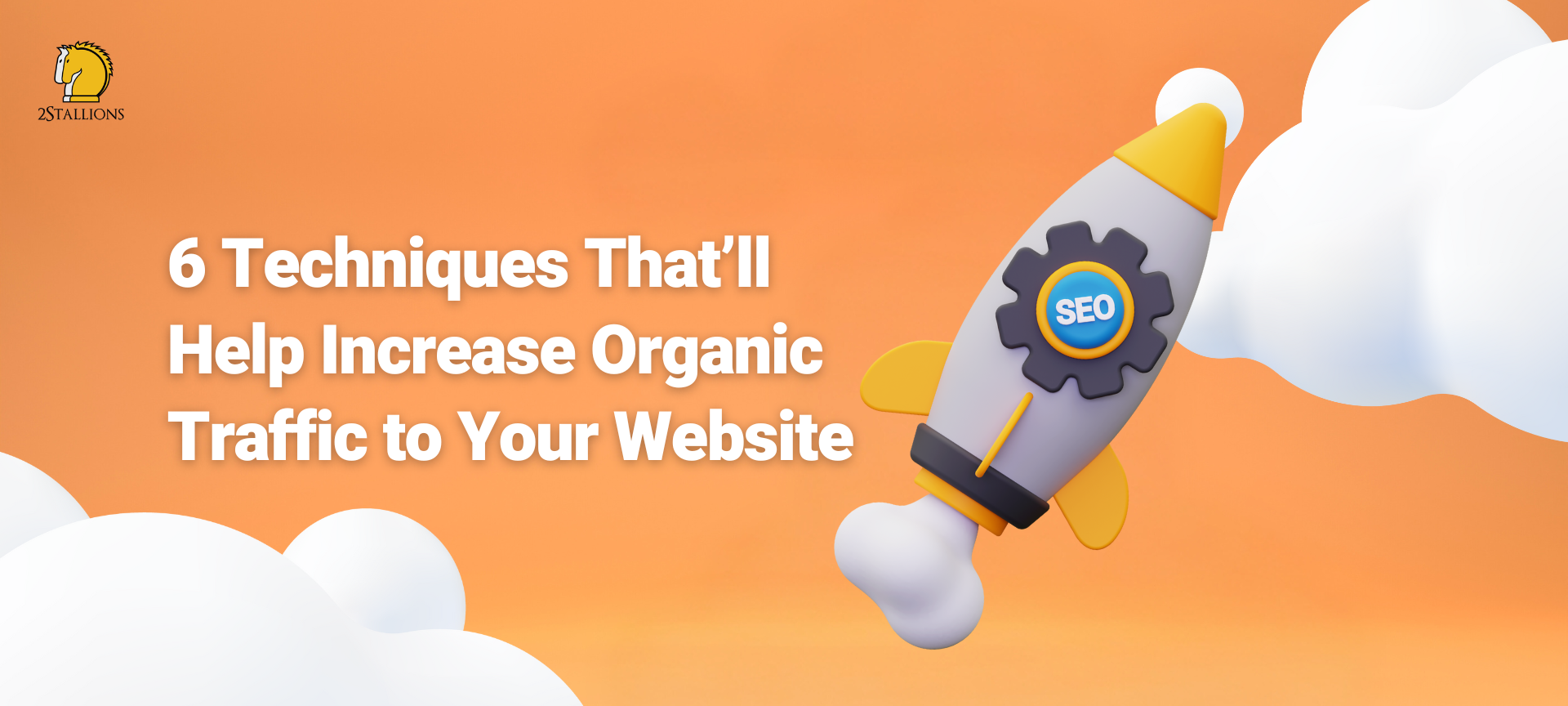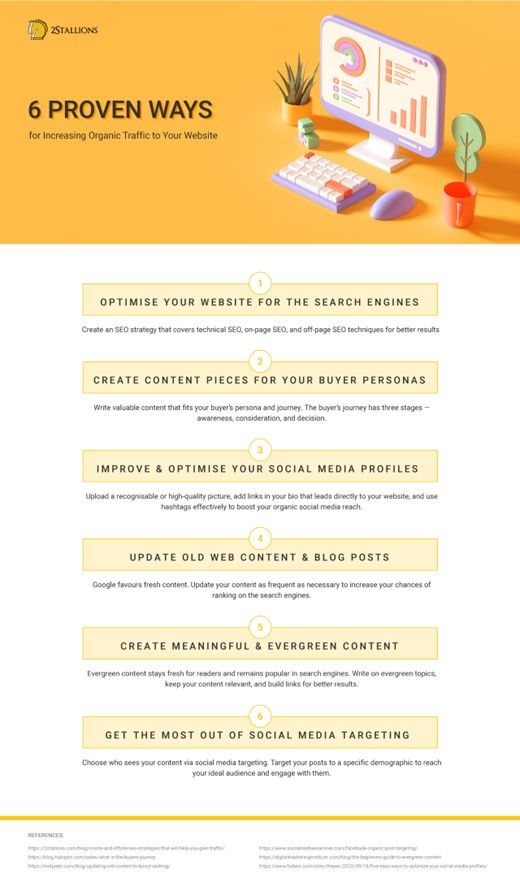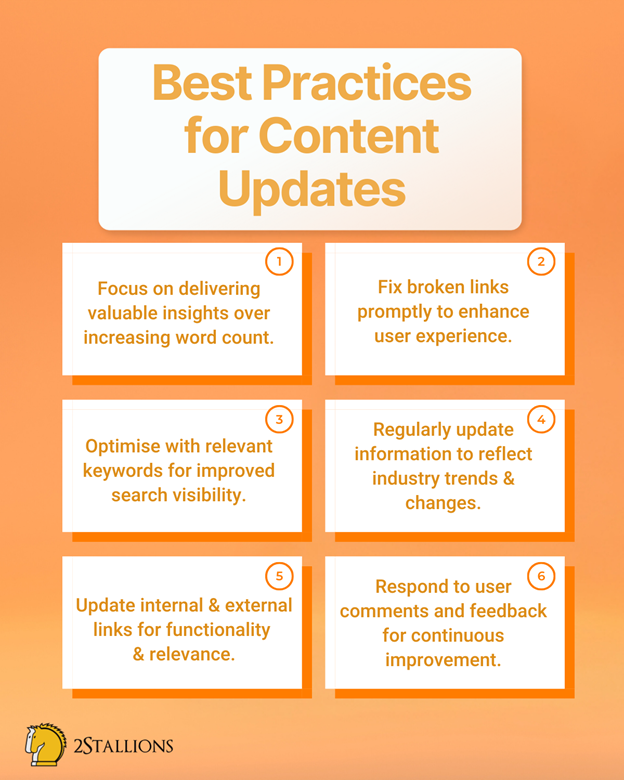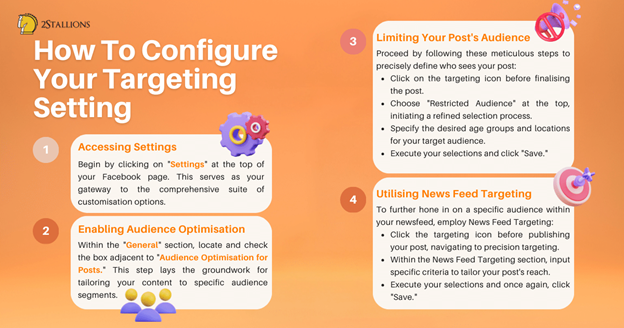Content
SHARE

Search engine optimisation (SEO), content marketing (CM), and social media marketing (SMM) might be different tactics, but they share a common goal—to increase organic traffic to your website. SEO works better when paired with the two. Your content pieces will attract more eyes when optimised for search engines and shared on social media. And you’re likely to improve your social media reach using the right content and set of keywords. In short, integrating these three techniques enables a digital marketing flywheel that lets you enjoy the best of both worlds and increases your chances of doubling your search traffic.
Understanding the Three Techniques—SEO, CM, and SMM
Search engine optimisation (SEO) focuses on boosting your website presence. It’s all about optimising your site to improve its visibility and rank higher in the search results pages. Content marketing is the process of creating and sharing content (i.e., videos, blogs, infographics, social media posts, etc.). This discipline relies on SEO to increase brand awareness, generate visits, and drive website traffic.

SEO Unveiled:
Search Engine Optimisation enhances your website’s visibility and ranking on search engine results pages. Broken down into technical SEO, on-page SEO, and off-page SEO, this strategy involves meeting the technical requirements of modern search engines, optimising on-site elements, and leveraging external factors to boost rankings.
Crafting Compelling Content:
Content Marketing is one of the key pillars to improve SEO. By creating content tailored to your buyer personas, you connect with your audience on a deeper level. By addressing the buyer’s journey’s awareness, consideration, and decision stages, your content becomes a guiding force that influences decisions and fosters brand loyalty.
Social Media’s Role:
Social Media Marketing is the amplifier that broadcasts your brand message far and wide. Optimising social media profiles using SEO principles, such as keyword-rich descriptions, ensures discoverability. By promoting engaging, SEO-optimised content, you not only boost social media reach but also drive organic traffic to your website.
Tips for Boosting Organic Website Traffic
1. Optimise for the Search Engines (and Readers)
Crafting a potent keyword strategy is one of the key pillars of improving SEO by capturing the attention of both search engines and human readers. Harness the power of long-tail keywords to penetrate specific niches as a way to increase website traffic organically. Achieving sustainable success requires navigating the delicate equilibrium between technical SEO intricacies and optimising content for reader engagement. Delving into the essence of SEO, we encounter three foundational pillars: technical SEO, on-page optimisation and off-page optimisation. Let’s explore the nuances that distinguish these optimisation techniques:
Technical SEO
Technical SEO involves meticulous attention to the behind-the-scenes elements that propel your website’s performance. From seamless crawling and JavaScript indexing to effective linking strategies, this pillar ensures that your website aligns with the intricate requirements of modern search engines.
On-page SEO
On-page optimisation is the art of fine-tuning visible elements on your website to resonate with search engines and, more importantly, captivating human readers. Meta descriptions, headlines, title tags, and content are meticulously crafted to appease search algorithms and provide relevant, engaging experiences for visitors.
Off-page SEO
In contrast, off-page SEO extends its influence beyond the confines of your website. It encompasses strategies such as cultivating inbound links, fostering social shares, considering domain age, managing citations, and curating reviews. These external factors enhance your website’s authority and elevate search rankings.
The trifecta of technical SEO, on-page optimisation, and off-page optimisation form the cornerstone of a comprehensive SEO strategy. By understanding and synergising these pillars, you pave the way for a robust online presence that resonates with search algorithms and your audience’s discerning eyes.
2. Create Content Pieces for Your Buyer Personas
Optimising for search engines is useless if you’re not driving profitable customer or client actions. This is where content marketing comes into action; it connects with your readers and influences them in making purchasing decisions.
To ensure you entice them until the decision stage, create content pieces that fit your buyer personas—fictional yet realistic representations of your target customers. If you haven’t created your audience personas, here are a few tips that may help you in designing them:
- Check your existing customers and social audience. Gather information such as age, location, language, spending power and patterns, interests, challenges, etc.
- Learn why they love your products or services. Tapping on social media listening is one way to discover customer experiences.
- Identify customer goals. Are they only researching, looking for reviews, or are they ready to buy?
Once you have buyer personas in place, you can deliver content that will be most relevant and valuable to your audience. The easiest way to use your audience personas is to cater your content to them.
Here are the three stages of the buyer’s journey, along with their ideal content types:
- Awareness stage: where personas are experiencing that need to be fixed. Blog posts, social media posts, and explainer videos are ideal pieces of content targeting this stage.
- Consideration stage: where personas are considering solutions to their pain points. The best content pieces for this stage are product comparison guides, case studies, and free samples.
- Decision stage: personas have decided on their solution or turned into buyers. Examples of ideal content formats for the decision stage are product descriptions, free trials and demos, reviews and customer testimonials.
These stages’ names sometimes vary. For example, they might be called the ‘Education’, ‘Consideration’, and ‘Purchase’ stages instead. The concepts, however, are generally always the same and are tied directly to the market funnel.
3. Promote & Optimise Your Social Media Profiles

- Upload a high-quality picture. Your profile picture puts a face to your name, so it must reflect your brand. It should also be recognisable; avoid using an image that has nothing to do with your business.
- Add links to your website. Take advantage of social media’s ability to build brand awareness. Include links in your bio section to direct target customers to your website.
- Use hashtags sparingly. Hashtags are like keywords that categorise the content. Consider adding relevant hashtags to promote your business and boost your visibility.
Optimising your social media profile involves curating a visual identity that reflects your brand, strategically directing traffic to your website, and using hashtags as effective tools for content categorisation. Collectively, these elements contribute to a cohesive and engaging online presence, reinforcing your brand’s image and fostering meaningful connections with your audience.
4. Update Old Web Content & Blog Posts
Here’s another link between SEO and content marketing: when you update your old web content or blog posts, you get Google to crawl your site more frequently. It’s like technical SEO, where search engine spiders crawl your website without coding—just upgrading. Having fresh content is critical for your website because Google favours frequently updated content.
If you frequently update your website or articles, Google finds it easier to search for your web pages and add them to the index. Frequent updates can help you have a better chance of ranking on the search engines. While a higher post frequency doesn’t necessarily increase your overall website rankings, it can increase organic traffic.
 Best Practices for Content Updates:
Best Practices for Content Updates:
1. Emphasise Quality over Quantity:
While increasing your blog’s word count is beneficial, maintaining content quality is imperative. Adding paragraphs solely for the sake of updating won’t guarantee favourable results. Keep your content standards high, aligning your writing with the needs and preferences of your readers.
2. Incorporate Valuable, Targeted Keywords:
Keywords remain integral to SEO success. Optimise your content by incorporating relevant keywords that resonate with your audience. Targeting new keywords expands your search visibility and attracts more organic traffic to your website.
3. Update or Add New Links:
Links, both internal and external, play pivotal roles in SEO. Interlinking your web pages and connecting your blog posts to your website positively impacts your SEO efforts. During the update process:
- Address 404 errors by fixing broken links and introducing significant replacements.
- Scrutinise and refresh outdated references, such as studies, research, and statistics, ensuring your external links align with the most recent findings. This enhances credibility and contributes to building your website’s authority.
5. Create Meaningful & Evergreen Content
Creating evergreen content increases organic traffic to your website and keeps driving regular traffic to your web pages for as long as you want. The reason behind this is simple—such content doesn’t go out of date. Not only does evergreen content stay fresh for readers, but it also remains popular in search engines. Google will find your content relevant, making you more visible and ranking higher in search results pages. To help you strengthen your evergreen content marketing strategy, we listed some actionable tips that will help you do just that.
- Choose evergreen topics. Keyword tools like Ahrefs can help you look for popular, consistently searched topics. Use such tools to see what keywords have positive trends and build your content around these keywords.
When writing blogs around evergreen topics, avoid using terms with a short lifespan, such as this month, last year, yesterday, and more. If you’re thinking about writing for a relevant year, for example, ‘Content Marketing Best Practices in 2021’, update the content every year or ensure the content will remain valid over time.
- Update content when necessary. As discussed in the previous point, Google recognises web pages with fresh content. You should refresh your content as often as necessary to ensure it’s evergreen and increase its chances of driving traffic or attracting leads and shares.
- Build high-quality backlinks. The good thing about evergreen or regularly updated content is that it can generate consistent leads, establish a brand reputation, and increase search engine rankings.
To ensure your business reaps these benefits, build links to your fresh content, encourage sharing on social media, and consider doing guest posting.
6. Get the Most Out of Social Media Targeting
Social media also holds power in your search rankings. Facebook, Twitter, Instagram, and other social media platforms can help you reach thousands of customers, giving you more chances to increase organic social media reach. However, publishing content on social media isn’t enough to improve your SEO results. You should also consider capitalising on social media’s ability to reach specific audience types. By choosing who sees your content, targeting ideal audiences and engaging with them becomes easier.
Facebook allows you to target any of your posts to a certain demographic. These general demographics include gender, age, relationship, educational status, location, interests, and language. Suppose you own and run a women’s fashion store in Singapore. You could target your posts to female shoppers who live in or near Singapore and are around 20-40 years of age. Here’s how you can start setting up Facebook targeting:
Click Settings at the top of your page.
- From General, check off the box next to Audience Optimisation for Posts.
Follow the steps below to limit your post’s audience.
- Click the targeting icon before publishing your post.
- Tick Restricted Audience at the top, then select the age and locations of the audience you want to see your post.
- Click Save.
To target a specific audience in your newsfeed, use News Feed Targeting.
- Click the targeting icon before publishing your post.
- In the News Feed Targeting section, enter the criteria of the people you’d like to reach in the News Feed.
- Click Save.
Also, you could specify the end date for when to stop showing your post organically in the news feed.
SEO, Content & Social Media: Stronger Together
Search engine optimisation, content marketing, and social media marketing are equally essential in helping you increase organic traffic to your website. One doesn’t outsmart the other, as all concepts can raise awareness of your brand, build an audience, and ultimately—convert prospects to customers. Instead of treating them as separate, different practices, why not integrate your SEO into your content and social media marketing strategy, or vice versa?
Originally published: 16 December 20222
Updated: 21 December 2023
Ready to revolutionise your online reputation? Our top-notch SEO firm in Singapore possesses the expertise and ingenuity to amplify your digital footprint. With an ingenious mix of compelling content and smart tactics, our adept team will skyrocket your search rankings to unprecedented levels. Get in touch with us today!
Frequently Asked Questions About How to Increase Organic Traffic to Your Website
How Can I Increase Organic Traffic to My Website?
Increasing organic traffic involves optimising your website for search engines, creating high-quality and relevant content, and building backlinks. Effective SEO strategies, such as keyword optimisation, can significantly enhance your website’s visibility in search engine results.
What Role Does Content Play in Driving Organic Traffic?
Content is a crucial driver of organic traffic. Creating valuable, relevant, and engaging content attracts visitors and helps improve search engine rankings. Regularly updating your website with fresh and informative content can increase organic traffic.
Are Social Media Platforms Effective for Boosting Organic Traffic?
Yes, social media platforms can be effective for driving organic traffic. Sharing your content on social media channels increases its visibility and encourages users to visit your website. Engaging with your audience on social media also helps build brand awareness, contributing to organic traffic growth.
Toggle title
Toggle content goes here, click edit button to change this text.


 Best Practices for Content Updates:
Best Practices for Content Updates: Click Settings at the top of your page.
Click Settings at the top of your page.










